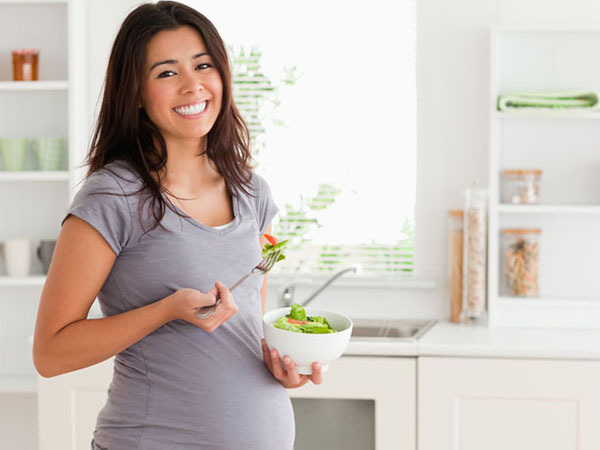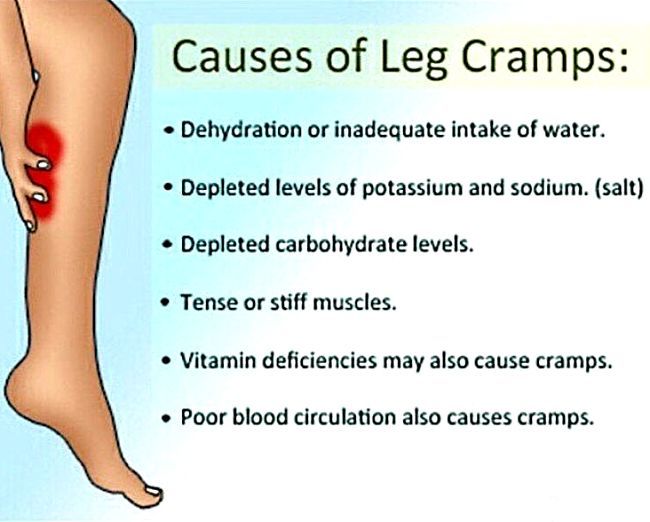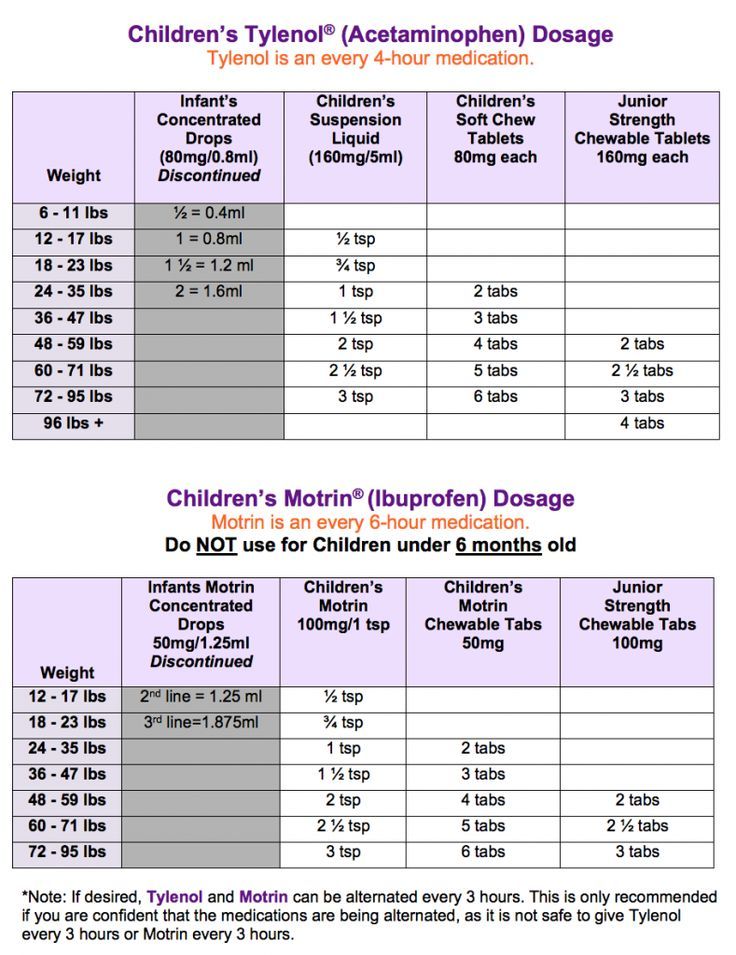Diet planner for pregnant women
Pregnancy meal plan: Healthy meals for pregnant women
- Pregnancy
- Diet & Fitness
By Nancy Montgomery
|
|
May 7, 2021
It's easy to feel overwhelmed by pregnancy nutrition advice and worry that your diet will never measure up. But eating well when you're pregnant doesn't need to be difficult. Pregnancy meal plans are more manageable with the help of a few simple, online tools – use these to be sure you're getting the nutrients you and your baby need.
Photo credit: Antonio_Diaz
- MyPlate for pregnancy and breastfeeding
- A sample MyPlate pregnancy meal plan
- The Harvard Healthy Eating Plate
- Which meal plan is best for pregnant women?
- Do these pregnancy meal plans work for everyone?
- Sample menu for pregnancy
Here's a look at general nutrition guidelines and how you can use them to plan meals during your pregnancy.
MyPlate for pregnancy and breastfeeding
You may remember the Food Guide Pyramid from the U.S. Department of Agriculture (USDA), which outlined how many daily servings you should eat from different categories of food. That pyramid has been adapted to become MyPlate, a system for choosing healthy food based on the USDA's Dietary Guidelines for Americans.
The site has a section on health and nutrition for pregnant and breastfeeding women, featuring a personalized tracking system that suggests meal plans based on your age, height, pre-pregnancy weight, activity level, and trimester.
MyPlate divides food into five main groups – grains, fruit, vegetables, protein, and dairy – plus oils. To get an individualized meal plan with general guidelines on what to choose from each group, go to ChooseMyPlate.gov.
A sample MyPlate pregnancy meal plan
Here's a quick look at the MyPlate food groups and what a customized plan might recommend.
This sample plan is designed for a 32-year-old woman who is 5 feet 4 inches tall, weighed 130 pounds before she got pregnant, is in her second trimester, and gets less than 30 minutes of daily physical activity. (Of course, your plan may be very different.)
(Of course, your plan may be very different.)
Grains: 7 ounces a day
Generally, an ounce of grains equals one slice of bread, one small corn or flour tortilla, 1 cup of ready-to-eat cereal, or 1/2 cup of cooked cereal, rice, or pasta. Get at least half of your daily grains from whole grains (like whole wheat bread or brown rice). Whole grains contain the most fiber, vitamins, and nutrients.
Fruits: 2 cups a day
Vary the color of the fruit you eat, and choose fresh over frozen or canned whenever possible. Many packaged varieties are preserved in sugary liquid, so choose products without added sugar.
Bonus: The fiber in fruit helps prevent hemorrhoids and constipation, two common side effects of pregnancy.
Vegetables: 3 cups a day
Fresh vegetables taste better than canned or frozen, and they're also a better choice if you want to limit sodium and avoid preservatives. But when it comes to fiber and vitamins, plain canned and frozen veggies are just as nutritious as fresh. For maximum nutrition, vary the color of the vegetables you choose. Broccoli, for example, is packed with folate, calcium, and B vitamins. Sweet potatoes provide vitamin A, vitamin C, and fiber.
For maximum nutrition, vary the color of the vegetables you choose. Broccoli, for example, is packed with folate, calcium, and B vitamins. Sweet potatoes provide vitamin A, vitamin C, and fiber.
Meat and beans: 6 ounces a day
This equals about two servings that are each about the size of a deck of cards. Choose lean meat and limit fish to 12 ounces per week. (More than that may expose your baby to potentially harmful levels of mercury.)
Dairy: 3 cups a day
In the MyPlate plan, 1 cup of dairy equals 1 cup of milk or yogurt, 1 1/2 ounces of natural cheese, and 2 ounces of processed cheese. In general, dairy products are a great source of calcium and protein.
Fats and oils: 6 teaspoons a day
The best sources include canola oil, olive oil, safflower oil, fatty fish, avocados, nuts, seeds, and olives. Note: An avocado is a fruit, but it's included in the oils category because most of its calories come from fat.
Discretionary calories: 266 a day
This MyPlate sample plan budgets 266 "extra" calories that you use how you like, but you must include them in your daily calorie budget. In other words, you could have a scoop of ice cream or put some sugar in your decaf iced tea, but these discretionary calories count toward your daily total (2,200 in this case).
Once you've created your daily food plan, don't try to hit exact numbers in each category. Instead, shoot for an average that's in the desired range over the course of a week or so.
As your pregnancy progresses, you'll need to eat a little more because your nutrition needs change during the different stages of pregnancy.
If you eat roughly the amount recommended for each food group, take a prenatal vitamin daily, and consistently gain a reasonable amount of weight (about a pound per week in the second and third trimesters), you and your baby will be well nourished.
The Harvard Healthy Eating Plate
Not everyone agrees that the USDA's MyPlate is the best model for good nutrition. Researchers at the Harvard School of Public Health have created their own eating guide, called the Healthy Eating Plate, which they believe better reflects current research on a balanced diet.
Researchers at the Harvard School of Public Health have created their own eating guide, called the Healthy Eating Plate, which they believe better reflects current research on a balanced diet.
The Harvard Healthy Eating Plate puts greater emphasis on whole grain foods, recommends healthy vegetable oils, and encourages limiting milk and dairy products to one or two servings a day. It also suggests limiting red meat (and avoiding processed meat altogether) and refined grains, such as white bread and white rice.
The Healthy Eating Plate also encourages drinking plenty of water and skipping sugary drinks, and highlights the importance of daily exercise.
Harvard's plan encourages you to eat more vegetables because most Americans don't eat enough from this important food group. One exception: Unlike the USDA's MyPlate, the Healthy Eating Plate does not include potatoes in its list of recommended vegetables. That's because potatoes are full of rapidly digested starch and have a similar effect on blood sugar as sweets.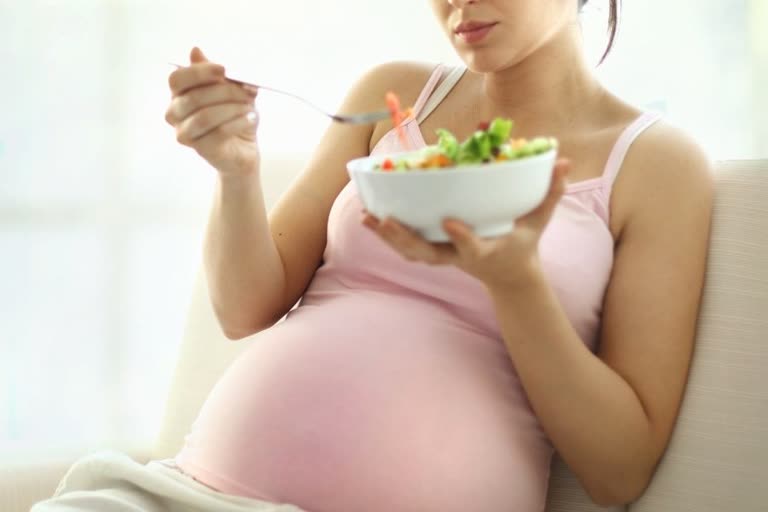
Which meal plan is best for pregnant women?
You can't go wrong with MyPlate or the Healthy Eating Plate. Because experts don't completely agree, you can expect to find slight variations in their recommendations, but the two plans have plenty in common.
Even if you can't follow either program to the letter, each gives you something to strive for, says Alan R. Fleischman, neonatologist and medical director of the March of Dimes. Eating nutritiously during pregnancy can pay huge dividends for the rest of your baby's life.
"We know that some simple dietary changes can greatly improve the chances of having a healthy baby. For example, consuming 400 micrograms of the B vitamin folic acid every day before pregnancy begins and during early pregnancy significantly reduces the risk of a serious birth defect of the brain and spine," says Fleischman. "Poor nutrition during pregnancy has lifelong effects on the growth and development of your baby. It's more important to eat wisely during pregnancy than practically any other time in life. "
"
Do these pregnancy meal plans work for everyone?
Not always. If any of the following apply to you, or if you have other concerns, talk to your healthcare provider about your personal nutritional needs.
- If you're significantly overweight, you might do better with fewer calories, but talk to your provider to make sure you're getting the nutrients your baby needs.
- If you're significantly underweight, you'll need to get more calories.
- If you're a teenager, you'll also need more.
- If you're expecting multiples, you'll have additional nutrition needs.
- If you develop gestational diabetes or have pre-existing diabetes, a registered dietitian can help you plan your diet. It will emphasize eating whole foods and getting a consistent amount of carbohydrates at each meal. You'll also need to monitor your blood sugar levels closely and communicate regularly with your team of healthcare providers.
Sample menu for pregnancy
Here's an example of a daily menu specifically designed for our "sample mom," with a few extra snack suggestions. Your menu may be similar to this one, but register on ChooseMyPlate.gov to get your customized plan.
Your menu may be similar to this one, but register on ChooseMyPlate.gov to get your customized plan.
Breakfast
1/2 cup cantaloupe
Two eggs scrambled with 1/4 cup mushrooms and bell pepper, using 1 teaspoon canola oil
One slice of whole wheat toast with 1 teaspoon of butter
1 cup low-fat milk
Snack
One large apple
Lunch
One medium baked potato topped with 3/4 cup chili with beans and 2 tablespoons grated cheddar cheese
1 cup spinach salad with 1 tablespoon dried cranberries and 2 tablespoons light salad dressing
Two rye crispbread crackers
1 cup low-fat milk
Snack
1/2 cup baby carrots
3 cups light popcorn (includes 1 teaspoon oil)
Dinner
1/2 sliced tomato and 1/4 of an avocado, sliced
4 ounces grilled salmon
1 cup cooked brown rice or quinoa
1/2 cup green beans, cooked
One multigrain roll
One orange
Snack
8 ounces low-fat milk
A small oatmeal cookie
This sample daily menu totals slightly less than 2,200 calories with 3 1/4 cups of vegetables, a little bit more than 2 cups of fruit, 8 ounces of meat and beans, 7 ounces of grains, 3 1/3 cups of dairy products, and 2 tablespoons of healthy fats and oils.
Sources
BabyCenter's editorial team is committed to providing the most helpful and trustworthy pregnancy and parenting information in the world. When creating and updating content, we rely on credible sources: respected health organizations, professional groups of doctors and other experts, and published studies in peer-reviewed journals. We believe you should always know the source of the information you're seeing. Learn more about our editorial and medical review policies.
ACOG. 2020. Healthy eating. American College of Obstetricians and Gynecologists. http://www.acog.org/Patients/FAQs/Healthy-Eating [Accessed May 2021]
ACOG. 2021. Nutrition during pregnancy. American College of Obstetricians and Gynecologists. http://www.acog.org/Patients/FAQs/Nutrition-During-Pregnancy [Accessed May 2021]
Harvard University. Undated. Healthy Eating Plate & Healthy Eating Pyramid. Harvard School of Public Health. http://www.hsph.harvard.edu/nutritionsource/healthy-eating-plate/ [Accessed May 2021]
HHS, USDA.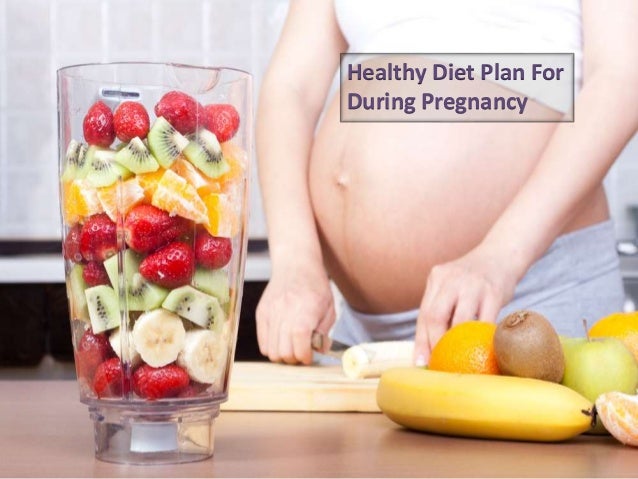 2015. 2020 – 2025 Dietary guidelines for Americans. U.S. Department of Health and Human Services and the U.S. Department of Agriculture. https://www.dietaryguidelines.gov/ [Accessed May 2021]
2015. 2020 – 2025 Dietary guidelines for Americans. U.S. Department of Health and Human Services and the U.S. Department of Agriculture. https://www.dietaryguidelines.gov/ [Accessed May 2021]
Show more
advertisement | page continues below
advertisement
Featured video
All pregnancy, parenting, and birth videos >
An Easy 7-Day Template To Follow
If you’re trying for a baby or have just fallen pregnant, it’s important to start taking care of your diet as eating healthy foods will help with your chances of conceiving and having a healthy pregnancy.
During pregnancy, daily requirements for some nutrients are higher than those for non-pregnant women and extra attention is needed to ensure you are getting enough key nutrients, including folate, iodine, calcium, iron, omega-3 fatty acids and choline.
As you're not only feeding yourself and aiming to boost your own health and wellbeing, but you are also providing all the nutrients needed for your growing baby, planning your meals can be confusing at first.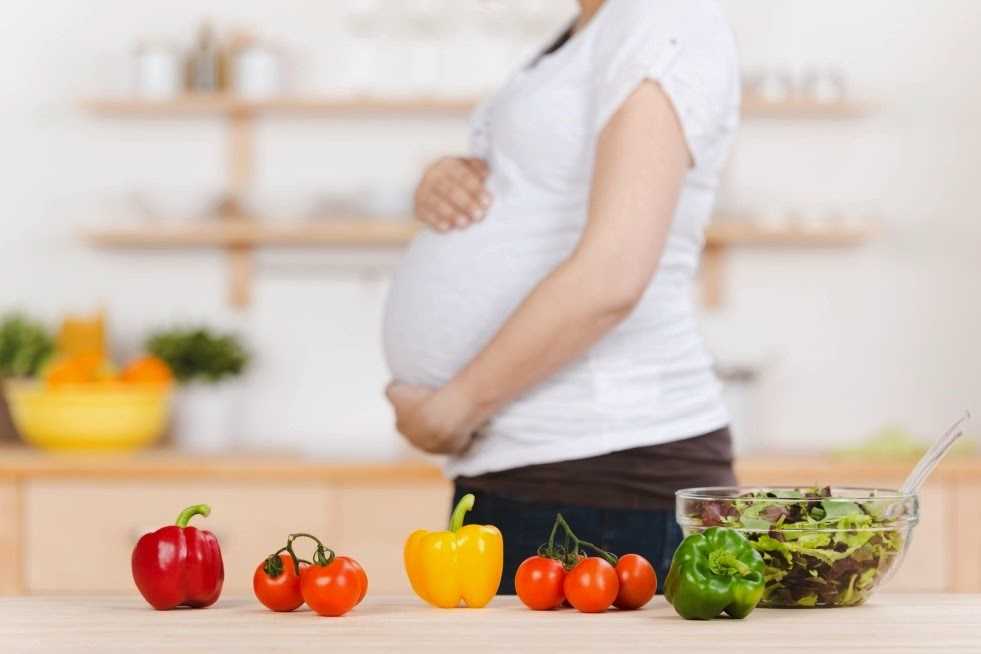
This 7-day pregnancy meal plan, curated by Accredited Dieticians, will help you meet your nutritional requirements during this wonderful time of life.
Notes About This Meal Plan
- This meal plan provides 10 eggs per week and provides at least 2 serves of fruit and 2.5 serves of dairy per day.
- Your needs may be higher or lower, therefore, for tailored advice please speak to an Accredited Practising Dietitian.
- It is important to follow the food safety recommendations during pregnancy to avoid the risk of food-borne illnesses. Eat leftovers within 24 hours of cooking. For advise on food safety in pregnancy visit http://www.foodstandards.gov.au/consumerinformation/pregnancyandhealthyeating/
Want to find out more?
VIEW MORE INFORMATION ABOUT EGGS AND PREGNANCY
For easy access jump to:- Day one
- Day two
- Day three
- Day four
- Day five
- Day six
- Day seven
Day One
Breakfast
Porridge made with Rolled Oats, Milk and Mixed Seeds: + 1 serve of fruit (eg.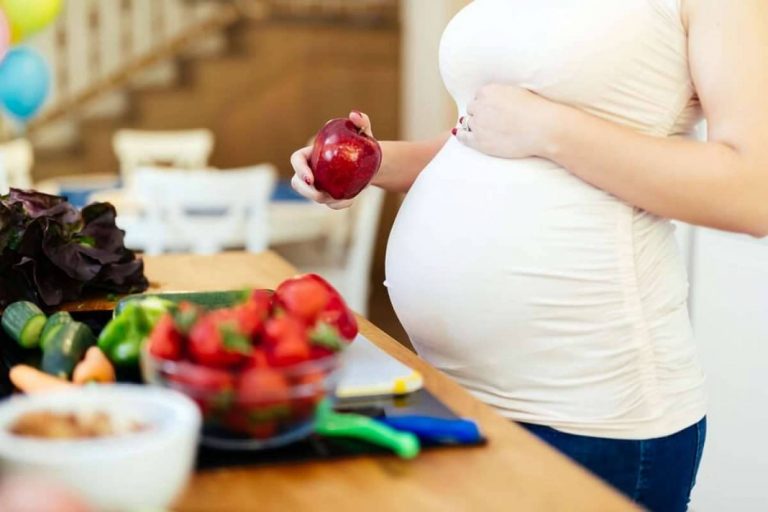 2 cups berries or 1 medium banana).
2 cups berries or 1 medium banana).
Lunch
Tinned tuna or salmon wrap: Small tin tuna or salmon + salad vegetables + avocado + low GI wrap.
Dinner
Lamb Stir-fry: Made with trim lamb + vegetables + brown rice + canola oil (for stir-frying).
Dessert/Supper
Chocolate Drizzled Banana: Made with half a banana and 2 teaspoons melted dark chocolate + 1 tub of yoghurt.
Snacks
Wholegrain crackers with 1 slice cheddar cheese + 1 serve of fruit (e.g. a medium apple or orange or pear).
Day Two
Breakfast
Muesli and Linseeds with Yoghurt: + 1 serve fruit (eg. 6 dried apricot halves or 2 tbsp sultanas).
Lunch
Homemade Toasted Chicken, Cheese & Avocado Sandwich: Made with multigrain bread (toasted) + chicken (ensure chicken is fresh) + cheese + avocado + margarine + a side salad served with an olive oil based dressing.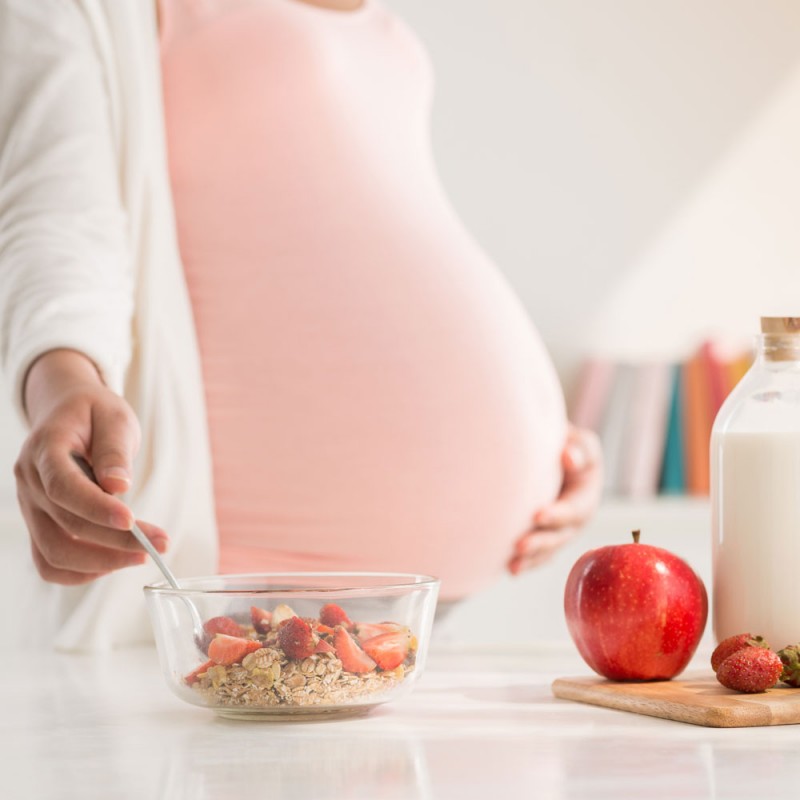
Dinner
Fried rice with sliced egg omelette (1 serve)
Dessert/Supper
Homemade smoothie: Made with milk + fruit + yogurt + chia seeds (e.g. banana or berries or mango).
Snacks
1 serve of fruit (eg. 3/4 cup grapes or 5 prunes) + 1 cup veggie sticks.
Day Three
Breakfast
Baked Beans on Multigrain Toast: + one glass of milk. + 1 serve of fruit (eg. 4 small plums or 2 cups diced watermelon).
Lunch
Leftover Fried Rice with Sliced Egg Omelette from night before.
Dinner
Grilled Salmon and Vegetables: served with sweet potato mash + steamed green vegetables (e.g, broccoli and green beans).
Dessert/Supper
Fresh Fruit & Cheese Platter: Slice and serve a variety of fresh fruits in season and hard cheese.
Snacks
1 tub yoghurt + handful of mixed nuts.
Day Four
Breakfast
Wholegrain Flaky Cereal: + milk + 1 serve of fruit (eg.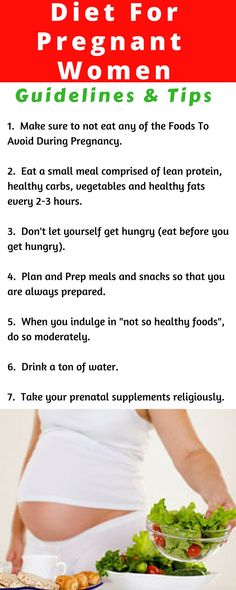 1 cup homemade fruit salad or 6 dried apricot halves).
1 cup homemade fruit salad or 6 dried apricot halves).
Lunch
Wild Rice, Dukkah Egg and Pomegranate (1 serve).
Dinner
Roast Vegetable, Chicken & Quinoa Salad: Made with chicken + vegetables roasted in olive oil + quinoa + mixed seeds.
Dessert/Supper
Fruit Pop: Made with frozen fruits (eg. bananas or mangos) blended with Greek yoghurt and frozen.
Snacks
1 serve of fruit (eg. 1 medium apple or orange) + 1 tub yoghurt.
Day Five
Breakfast
Multigrain Bread with Peanut Butter: + 1 serve of fruit (eg. 4 small plums or 1 small mango). + 1 glass of milk.
Lunch
Grilled Chicken & Salad Wrap: made with grilled lean chicken + salad vegetables (carrot, tomato, cucumber) + avocado + shredded cheese + multigrain wrap.
Dinner
Healthy Lentil and Feta Frittata
Dessert/Supper
Fruit Salad & Yoghurt: 1 cup fresh fruit salad with 200g vanilla yoghurt.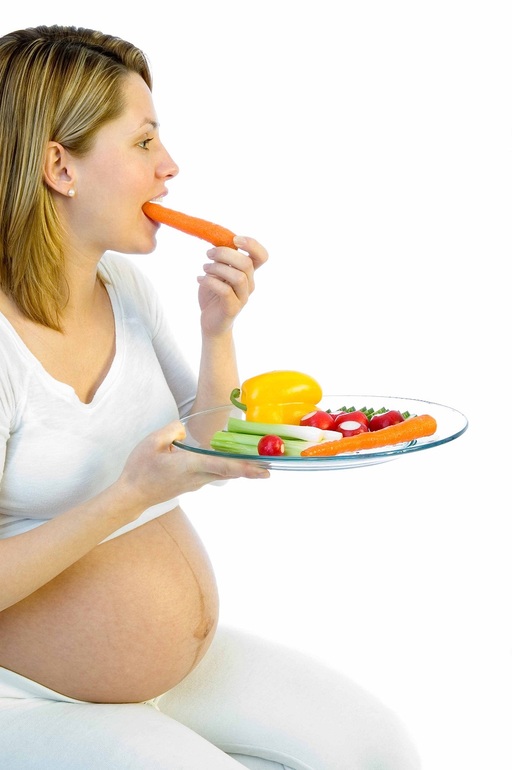
Snacks
Wholegrain crackers with 1 slice cheddar cheese + sliced tomato + 1 hard boiled egg
Day Six
Breakfast
Muesli and Mixed Seeds with Yoghurt: + 1 serve fruit (eg. 6 dried apricot halves or 2 tbsp sultanas).
Lunch
Leftover Lentil & Feta Fritatta from night before served with salad.
Dinner
Chicken Thigh Fillets Baked in a Tomato & Vegetable Sauce: Served with rice and a side salad, including olive oil based dressing.
Dessert/Supper
Banana Souffle (1 serve): + 1 glass of milk.
Snacks
1 serve of fruit (eg. 1 medium pear or orange) + mixed nuts.
Day Seven
Breakfast
Boiled Eggs with Avocado on Sourdough Bread.
Lunch
Baked Fish: Served with vegetables and baked potato wedges + 1 serve of fruit (e.g. 2 cups diced watermelon)
Dinner
Easy Dinner: 1-2 slices multigrain toast with 1 cup baked beans + avocado.
Dessert/Supper
Homemade Smoothie: Made with milk + fruit +chia seeds (eg. a banana or berries or a mango).
Snacks
1 tub of yoghurt + handful of mixed nuts.
Choline - The Forgotten Nutrient
Choline plays a crucial role during pregnancy, helping support brain and spinal cord development – modifying development pathways into childhood and potentially adulthood. Low choline intake levels are associated with an increased risk of neural tube defects in women with adequate folate levels and a failure to provide choline during the first 1000 days post-conception could result in lifelong deficits in brain function even if adequate choline is consumed subsequently.
Latest research shows that if women consumed the equivalent of one extra egg a day, the percentage of women with adequate choline intakes would increase from 39% to 80%.
Learn More About Eggs And Nutrition
Not sure whether eggs may be beneficial in your situation? Learn more about how eggs may help serve your nutritional needs today.
Discover our super easy & delicious meal plans designed to help you achieve a healthy and balanced diet. Check out our weight loss or low cholesterol meal plan today!
Proper nutrition for pregnant women and breastfeeding mothers. Part 1. If everything is fine - Anastasia Arseneva and #moms_against_iron_deficiency
Sochi. Beach. Summer 2017.There will be no recipes here. Only evidence-based medicine and a look at food from a different angle. in terms of women's health.
What's in the post?
- Epigenetics: what is it and why is it more important than genes?
- 5 types of foods you should eat every day.
- What is a varied diet?
- What is a balanced diet?
- Healthy diet guidelines WHO
Health depends on genes by only 10-30%. The remaining 70-90% is the influence of the environment and lifestyle. How is this possible? After all, genes control everything. Every cell in our body grows and develops under the command of genes.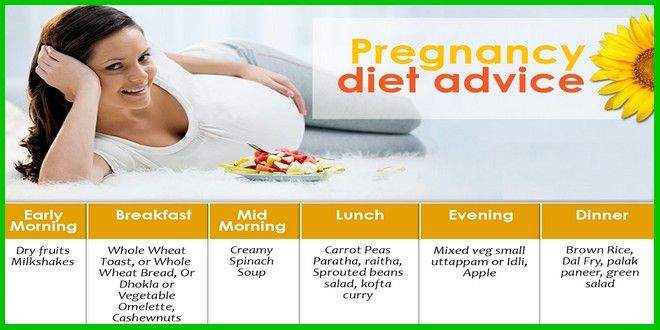 The point is that genes are not the highest level of control.
The point is that genes are not the highest level of control.
We received the sequence of genes in the chromosome at conception from mom and dad. She is unchanging. But the activity of the genes that we got is not always the same. They may work more efficiently or slow down.
There is a great example from the animal kingdom. Vole mice that are born in the fall have thicker, longer, and warmer coats than those born in the spring. In this case, the pregnancy in the mother-mouse occurs in approximately the same conditions. And in autumn and spring it is equally warm or cold, dry or damp. How do the genes know that winter is coming, which means mice need a warmer coat?
Changes in blood melatonin concentration affect gene activity. It is a hormone that regulates the circadian rhythm. Otherwise, the biological clock. Melatonin levels are dependent on light exposure. The more sunlight, the less melatonin, and vice versa.
The day in spring is getting longer.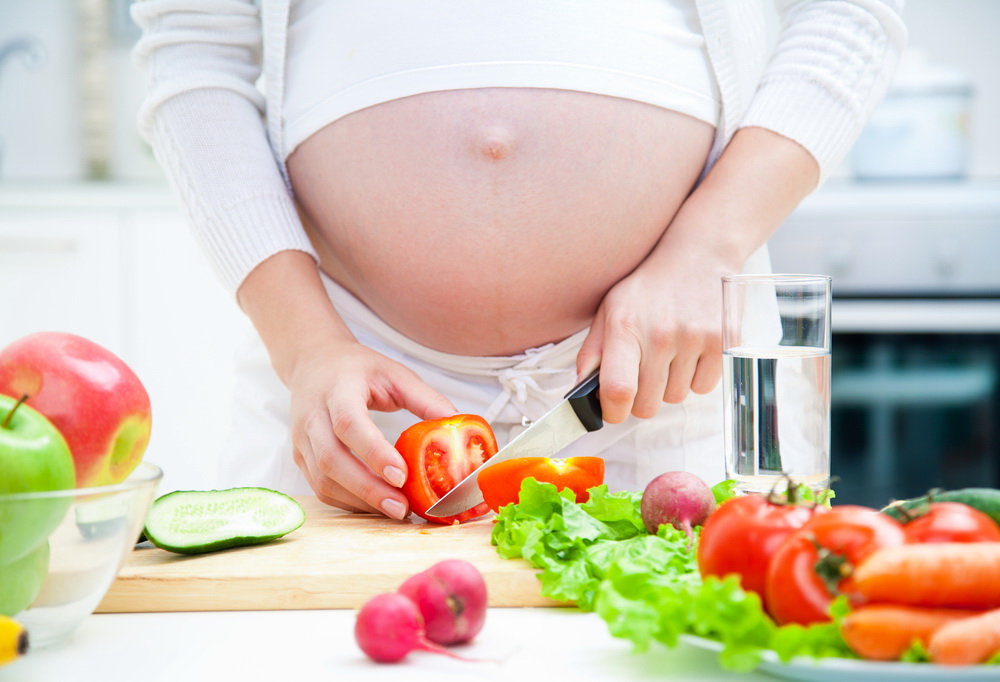 And the average concentration of melatonin in the blood of a pregnant mouse decreases as summer approaches. This reduces the activity of "wool genes" in mice still in utero. They are born with a "light" coat.
And the average concentration of melatonin in the blood of a pregnant mouse decreases as summer approaches. This reduces the activity of "wool genes" in mice still in utero. They are born with a "light" coat.
And in the autumn, the genes in this same mouse know that the day is getting shorter because the melatonin concentration is gradually increasing. So it's the other way around. The activity of "wool genes" in her future children increases. And mice are born in a warm coat.
This higher level of gene control is called epigenetics (something “above” genes). A complex mechanism of hormones and enzymes gives a command to the genes: work more actively, and now stop, do not work anymore. Epigenetics also provides the connection of genes with the environment and the way of life of a person.
Click on the picture and you will be taken to the planner page.
And what do you think, we are very different from mice? I don't know if more woolly babies are born in autumn than in spring.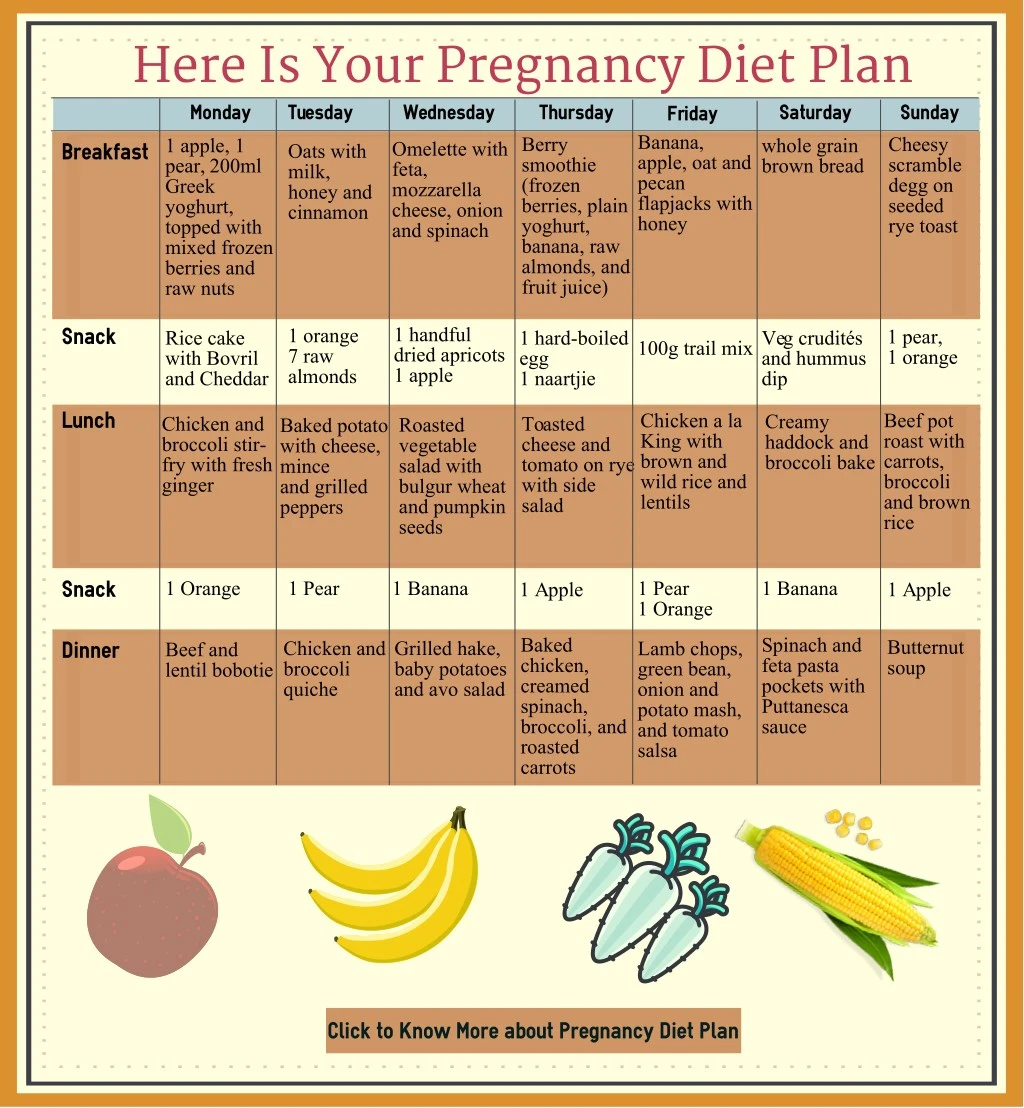 But the activity of the child's genes after birth depends on what mom and dad ate 3 months before conception. What kind of life did they lead?
But the activity of the child's genes after birth depends on what mom and dad ate 3 months before conception. What kind of life did they lead?
These data have changed the attitude towards preconception preparation. That is, preparing a couple for conception. Now it's not just tests and vitamins. Both mom and dad are encouraged to lead a healthy lifestyle and eat right if they are planning a pregnancy. And then adhere to these principles for the entire period of pregnancy and breastfeeding.
WHO principles of healthy eating
See those red dots? They indicate countries that have national guidelines for healthy eating. I looked at British, German, Canadian, Australian, Brazilian. I also read the WHO guidelines. All of them are similar in the main part and call for the following:
-
Eat as varied as possible.
-
Eat as many vegetables and fruits as possible.
-
Do not eat junk food.
-
AND DAILY include the 5 most important types of foods in your diet.
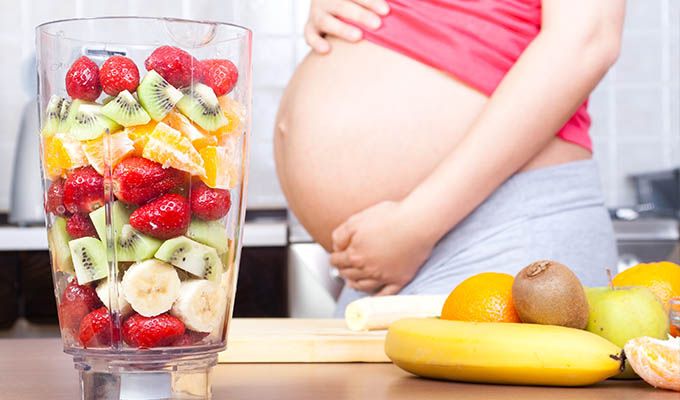
It's simple! Healthy eating is 75% about what you CAN and should eat. And only 25% about what you need to give up.
5 types of food to eat every day:
- Vegetables
- Fruit
- Whole grain cereals or bread
- Fish or poultry or meat or legumes
- Dairy products
Why these five groups. Why are they useful? How many of them do you want to eat? How to balance them among themselves? Read the answers to these questions below. 😉
Vegetables
This is the main source of various vitamins, microelements, fiber. Fiber is the main food for beneficial microbes in the gut. Beneficial microbes:
- produce a substance that affects appetite and prevents us from overeating;
- produce a substance that protects blood vessels and the heart from bad cholesterol;
- produce a substance that reduces inflammation in the intestines and blocks the development of cancer cells there.
Do you think it's enough to eat vegetables every day? In addition…
During pregnancy, a sufficient amount of vegetables in the diet will help prevent constipation, which is so common in later pregnancy. And immediately after childbirth, vegetables will help the intestines to start working actively and also do without constipation. Especially a normal regular stool is important if there were tears or an episiotomy, and now the sutures of the perineum are healing.
How much?
5 servings a day. 1 serving - 100 grams. Ideally, you should eat five different vegetables. Five servings of carrots won't do. Different vegetables contain different trace elements and vitamins. We all need them.
This is how the amount of vegetables that it is desirable to eat during the day looks like.Fruits
Vitamins, trace elements and antioxidants. These substances are also found in vegetables, but some fruits and berries are especially rich in them. For example, all blue berries contain anthocyanins, molecules that improve brain health. Blackberries, blueberries, blueberries, mulberries: Ask a friend who is coming to your Baby Shower to bring berries instead of candy.
For example, all blue berries contain anthocyanins, molecules that improve brain health. Blackberries, blueberries, blueberries, mulberries: Ask a friend who is coming to your Baby Shower to bring berries instead of candy.
Pay attention to dried fruits and fresh fruits. It is a healthier alternative to desserts during pregnancy and breastfeeding when sugar cravings increase due to lack of sleep at night .
How much?
3 servings of fruits or berries per day. Quite achievable amount in summer. Vegetables in the diet should always prevail over fruits. Despite the benefits of the latter, they are high in sugar. Fruit sugar acts on the endocrine system in the same way as regular sugar.
Whole grains
Contains fiber, vegetable Omega 3, B vitamins, vegetable protein. Whole grains include cereals and bread, as well as all nuts and seeds.
Omega 3 is needed for the healthy development of the brain and immunity of the child both during pregnancy and breastfeeding. But the mother herself needs Omega 3 . After all, the first months mom will not sleep at night.
But the mother herself needs Omega 3 . After all, the first months mom will not sleep at night.
When we do not sleep for a long time, the brain does not rest well and experiences stress. Therefore, he pushes us to eat sweets. To somehow compensate for this stress. After all, glucose, entering the bloodstream, stimulates the production of hormones of joy - endorphins.
Give the brain Omega 3, as well as B vitamins - it is very important that it survives the period of lack of sleep more easily.
How much?
It's good if you eat at least 1 portion of any such cereal per day . But more is possible. Use nuts and seeds in salads, desserts, as a snack.
Foods rich in protein.
Fish, poultry, eggs, meat or legumes are rich in complete protein as a vegetarian alternative. During pregnancy and breastfeeding, the need for it is higher.
In addition, the need for protein increases if you play sports.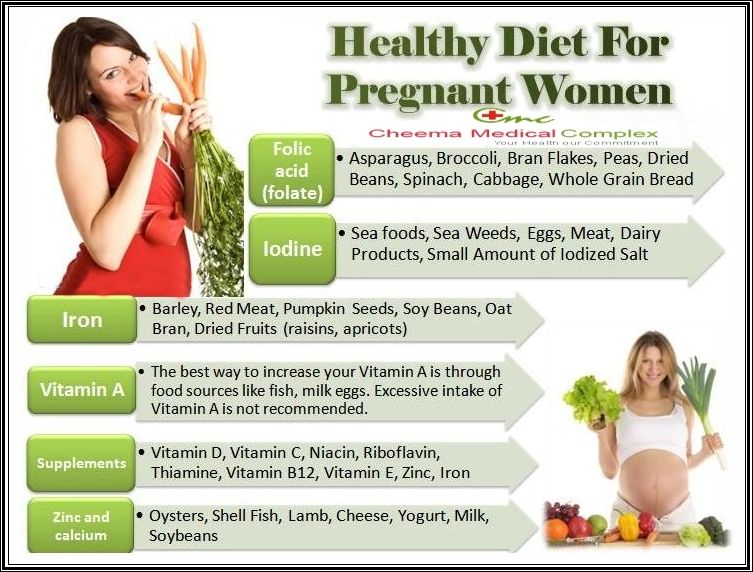 (And I hope it is.) Because muscle is protein. When you exercise, they grow, which means they require more protein from food.
(And I hope it is.) Because muscle is protein. When you exercise, they grow, which means they require more protein from food.
And muscles are iron. Muscles are made up of the protein myoglobin, which, like hemoglobin, contains iron . If a woman's iron stores are reduced, then she gets physically tired faster. And if a woman with an iron deficiency is actively involved in sports, then her workouts may be less effective. Muscles without iron grow worse, and even experience oxygen starvation.
Very conveniently, the protein-rich foods from this paragraph are also very rich in iron! There is more iron in meat, poultry and seafood than in fish and it is very well absorbed from there. There is even more iron in legumes than in meat, but it is absorbed worse from there.
How much?
Foods rich in protein may be included in each meal a little. This makes it easier for the body to absorb them. 1/6 of your plate can be taken up with protein-rich foods.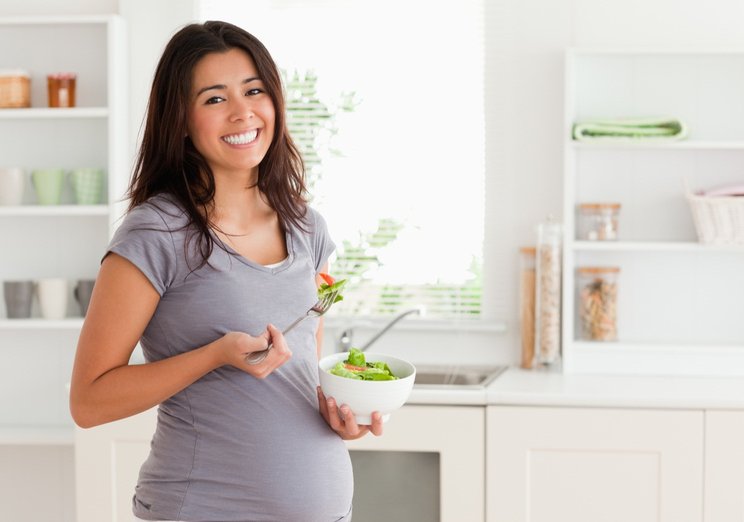
Among them, I will especially note fish and legumes.
Fish should be eaten at least 2 times a week. It is also a source of Omega 3, essential for brain development and immunity. Sea fish also contains a lot of calcium.
Pregnant and breastfeeding women should not eat long-lived marine fish - tuna, shark , for example. These varieties can accumulate a lot of lead or mercury. For an adult, this amount is not dangerous, it can be dangerous for the fetus. Children of the first years of life of these fish are also not recommended to eat.
Legumes deserve a separate paragraph.
All legumes contain short carbohydrate molecules. They are called oligosaccharides. These molecules are prebiotics. In the intestines, they are not absorbed and are not used by our own body in any way. But, these oligosaccharides are the favorite food of beneficial microbes .
When microbes digest oligosaccharides, another molecule is produced. It reduces the level of inflammation in the intestines, and also protects it from cancer. This is one reason why vegetarians in the EPIC-Oxford study were 38% less likely to get colon cancer.
Digesting oligosaccharides, microbes release a gas that causes bloating and ... farting. To reduce this side effect, it is worth eating legumes a little, but often. Over time, microbes will get used to the regular intake of oligosaccharides, and the number of gaziks will decrease.
Beneficial microbes can migrate from the gut and protect the vaginal mucosa from fungal infection. And non-beneficial microbes can move into the urinary tract and cause cystitis. Sometimes after childbirth, this problem worsens.
Therefore, newborn mothers need to take care of the microbes in their intestines. Feed them fiber and oligosaccharides. After all, the better life is for beneficial microbes, the less likely it is that non-useful microbes will start.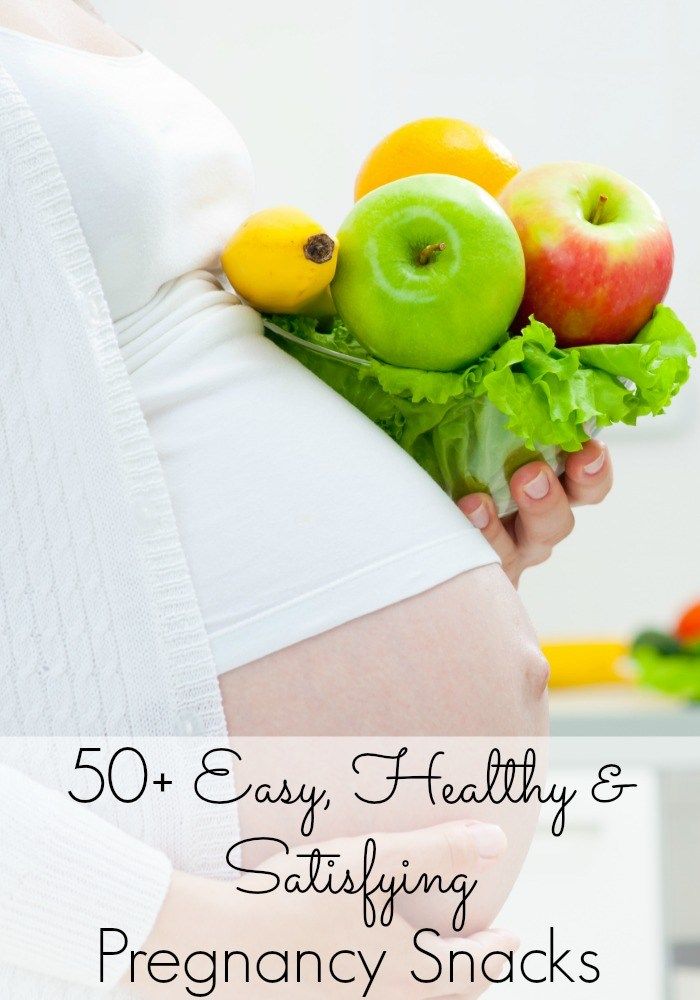
How much?
Even if you're not a vegetarian and you're getting plenty of protein from animal sources, it's worth having a veg day a couple of times a week. Use legumes instead of meat, fish or chicken.
Dairy products.
This is the only dietary source of readily available calcium for women and children.
When you are pregnant or breastfeeding, calcium from your bones goes to your baby. It is from bones, not from food. The calcium that you eat is built back into the bones and replenishes your supply.
If the supply is not replenished, then after 50 years, all these unpatched "holes" in the bones can lead to fractures. Read more about this in the post "Caution! Osteoporosis,” wrote endocrinologist Zhenya Skrynnik.
How much?
3 servings of any dairy products per day. Preference should be given to products with a low fat content. And no added sugar. Sour cream, cream, fatty cheeses - no. Natural yogurt, cottage cheese, low-fat cheese - yes.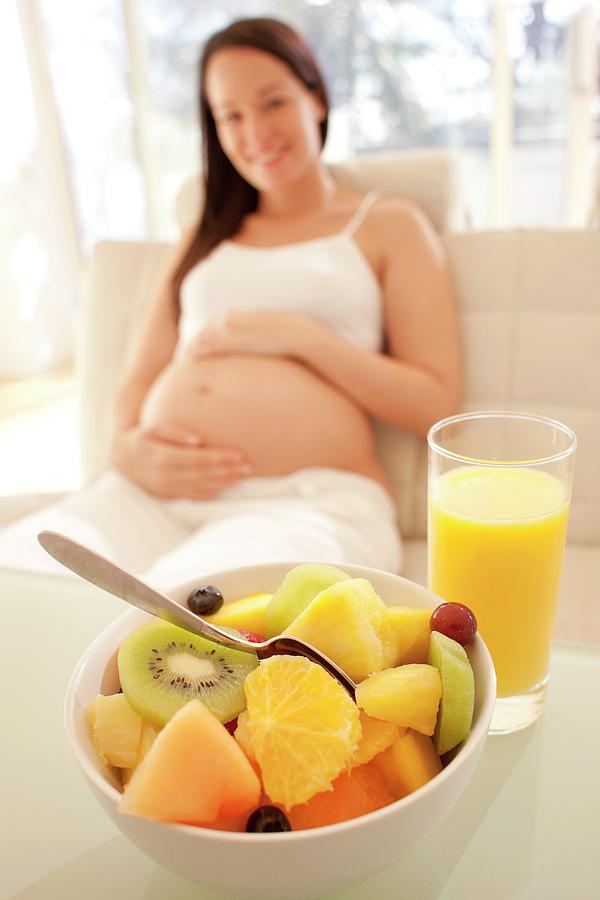
The fact is that the sex hormones estrogens are fat-soluble. It is in milk fat (cream) that they are the most. Bovine estrogens can have a negative effect on a woman's endocrine system, according to some studies.
Fermented milk products have 2 advantages over milk:
- These are probiotics , that is, a source of beneficial microbes. In addition to the fact that microbes need to be well fed, they need to be regularly added to the intestines.
- This is fermented milk . That is, it is more easily absorbed by an adult body than whole milk.
This does not mean that drinking whole milk is harmful. Focus on how you feel. If milk does not cause you stool disorders and other troubles, drink it too. As a general rule, the number of enzymes in the intestines that help digest whole milk decreases with age. You are probably still far from that age.
If you have intolerance to any dairy products, as a source of calcium be sure to eat sea fish .
If you are a strict vegetarian and do not eat milk or fish, it is worth talking to your doctor about dietary supplements or vitamins that contain the required dose of calcium.
What does a balanced diet mean?
I like to use the three-thirds rule to judge the balance of the main food components on my plate.
- 1/3 of it is occupied by slow carbohydrates (all cereals, pasta, bread and potatoes).
- 1/3 vegetables or fruits, depending on the dish.
- 1/3 roughly halve protein-rich foods and sour-milk foods.
This rule is very easy to follow. It is very visual. It is enough to put everything that you are going to eat in a particular meal on one plate. Like a buffet hotel. Work out in the summer on vacation if you are in such a hotel.
Fat.
The amount of animal fat in the diet should be limited. And for cooking use unrefined vegetable oils. They have much more vitamins and Omega 3 than refined ones.
Sugar.
It is also worth limiting to 30 grams per day. This is all the sugar, including the one you eat with processed foods. This amount is contained, for example: in a large glass of juice, in two Alexandrov curds, in three Barney Bears. If you have already eaten some of this, then you should not put sugar in porridge today.
What does a varied diet mean?
If you eat 15-20 different types of food a day, then you eat a variety of foods. I think this list does not include spices and herbs, which are added to the dish little by little. But different types of cereals, vegetables, fruits, legumes, greens, meat, fish, nuts, vegetable oils are included.
Each product contains a unique set of trace elements and vitamins. If you eat the same thing all the time, you get only a limited set.
These simple exercises will help keep variety in focus:
- Notice what food you cook most often during the week.
- Try speaking into a voice recorder or writing notes on your phone about what you eat during the day.

- In the evening, count how many kinds of food you have eaten.
- Note whether all five groups described above are present in your diet.
Only by eating a varied and balanced diet, you can get almost all the trace elements and vitamins with food. If for various reasons you severely restrict your diet during pregnancy and breastfeeding, be sure to discuss additional sources of vitamins and trace elements with your doctor.
And also remember:
- The whole territory of Russia is in the iodine deficient zone .
- Countries located in northern latitudes are deficient in vitamin D .
- Folic acid is recommended by WHO as a supplement in preparation for pregnancy and throughout the first trimester, regardless of diet.
- 90% of pregnant women receive insufficient iron from food .
The intake of these trace elements and vitamin D during pregnancy and breastfeeding is recommended.
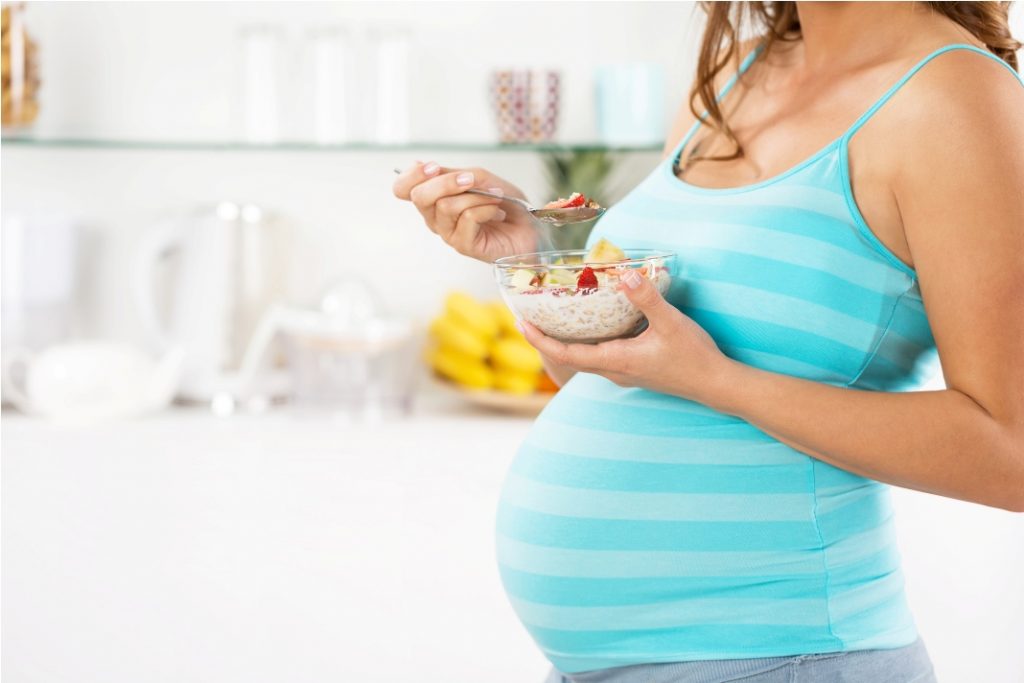 This should definitely be discussed with your doctor.
This should definitely be discussed with your doctor. *****
In the next part I will tell you about the composition of breast milk (how it depends on the mother’s nutrition), hypoallergenic diet (does it make sense), the nutritional features of an atopic mother (why did I become a vegetarian), which is definitely not worth eating moms (and dads).
How do you like the story about epigenetics? Makes me think.
Related links:
Diet rich in iron
Vegetarianism and pregnancy
Breastfeeding, adapted formulas and first foods
Liked this:
Like Loading… and physical changes in your body. It is important for her to rebuild some eating habits in favor of more correct ones. When carrying a fetus, the consumption of valuable vitamins and trace elements increases, so you need to replenish their reserves all the time. Let's talk about what a pregnant woman's diet can be and how to make nutrition complete.
Website editor
Tags:
diets
protein diet
diet table
How to lose weight during pregnancy
Diet for pregnant women
If you follow the rules of nutrition during pregnancy, the diet will keep the weight normal and will not harm the baby. Here are the basic principles of the diet for expectant mothers and draw up an approximate menu.
Here are the basic principles of the diet for expectant mothers and draw up an approximate menu.
Contents of the article
Diet during pregnancy must solve a large number of problems. First, you need to provide your body and the developing body of the child with all the necessary substances. Secondly, to minimize the symptoms of toxicosis, reduce the burden on the liver and stomach. And, thirdly, to avoid excessive weight gain in the expectant mother. We tell you what a safe diet for pregnant women consists of for weight loss.
Is it safe to lose weight during pregnancy?
Pregnant women are generally not advised to lose weight or follow a strict diet during pregnancy. But as part of a balanced diet, the expectant mother can safely lose a few pounds during the first trimester. The main thing is to stick to a healthy diet and avoid fatty and sugary foods. Only in this case, after giving birth, you will quickly return to your previous shape.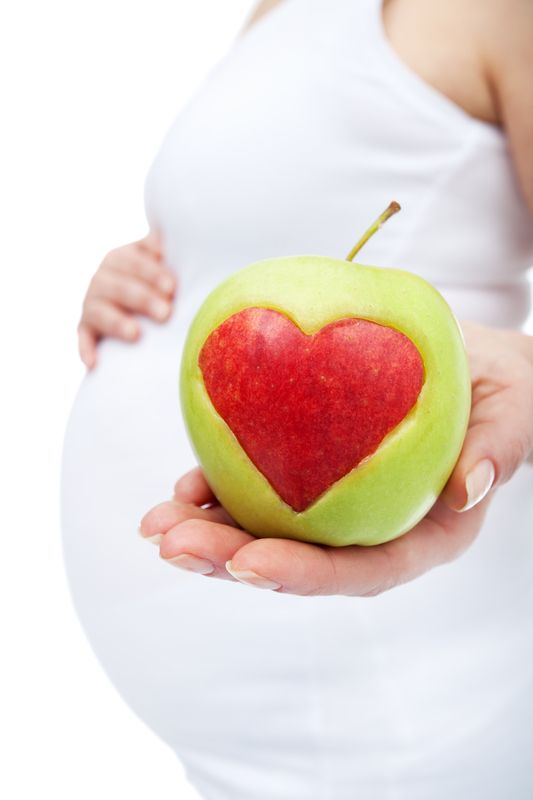
Diet for pregnant women - general recommendations
There is a diet for pregnant women for the 1st, 2nd and 3rd trimesters to reduce weight, but due to the competent construction of the diet, and not a complete rejection of food. We will talk about the nutritional features at each stage of fetal development. However, there are general rules that should be observed during the entire course of pregnancy.
- Eat 5-6 times a day in small portions.
- The last meal should be no later than 3 hours before bedtime.
- Avoid alcohol, fried, smoked, coffee and fast food.
- Eat mostly fruits, nuts, vegetable broths, cereals, lean fish.
- Take vitamin complexes.
Pregnancy Diet - 1st Trimester
In the first trimester of pregnancy, the fetus is formed from the embryo, the brain and internal organs begin to develop.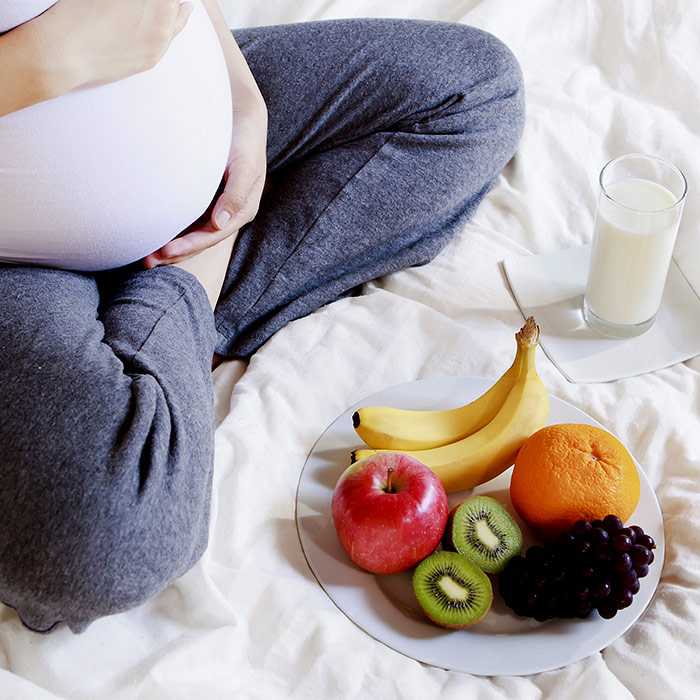 During this period, you need to approach the preparation of the diet most seriously.
During this period, you need to approach the preparation of the diet most seriously.
The body of the expectant mother should receive enough protein and folic acid. And a diet for pregnant women should take into account such important points. These substances are rich in foods such as lean meat and eggs, legumes, lettuce, whole grain bread, cheese, cottage cheese, celery, cabbage, liver, apples.
Diet menu for the 1st trimester of pregnancy
Our great-grandmothers' favorite saying that it's time to eat for two should encourage you to eat better, better, not more. Adjust your diet so as not to harm yourself or your child. In the early stages, a diet for pregnant women is especially important, so be sure to consult a doctor. He will be able to suggest which products to add and which should be excluded.
Monday
- Breakfast: buckwheat with yogurt, apple juice with celery.

- Second breakfast: cottage cheese.
- Lunch: vegetable soup, wholemeal bread.
- Afternoon snack: peach.
- Dinner: salad with salmon and avocado.
- Late dinner: berry juice.
Tuesday
- Breakfast: cottage cheese with berries, tea.
- Second breakfast: dry biscuits, freshly squeezed juice.
- Lunch: pumpkin puree soup.
- Snack: apples.
- Dinner: steamed turkey meatball.
- Late dinner: yogurt.
Wednesday
- Breakfast: oatmeal with milk.
- Second breakfast: bread with butter.
- Lunch: fish soup.
- Snack: cottage cheese with low-fat sour cream.
- Dinner: liver, buckwheat.
- Late dinner: seaweed salad.
Thursday
- Breakfast: sugar-free granola with milk.
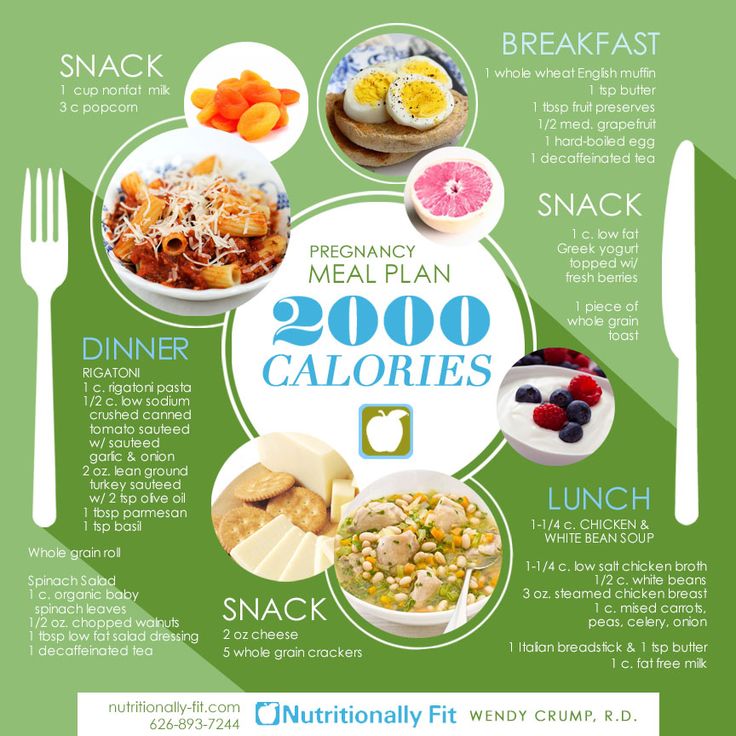
- Second breakfast: yogurt.
- Lunch: weak meat broth with egg.
- Snack: vegetable salad.
- Dinner: stewed cabbage, rice.
- Late dinner: fruit drink.
Friday
- Breakfast: bread with tomatoes and cream cheese.
- Second breakfast: pear.
- Lunch: pasta with meat hedgehog.
- Snack: almonds.
- Dinner: baked potatoes with herbs and butter.
- Before going to bed: herbal tea, fermented baked milk.
Saturday
- Breakfast: cottage cheese pancakes 5%, green tea.
- Second breakfast: prunes.
- Lunch: chicken soup, bread.
- Afternoon snack: cabbage and carrot salad.
- Dinner: cucumber and tomato salad.
- Late dinner: a glass of milk.
Sunday
- Breakfast: millet porridge, juice.

- Second breakfast: orange.
- Lunch: vegetable soup with tomatoes, peppers and Brussels sprouts.
- Snack: pear.
- Dinner: steamed fish cake and vegetables.
- Late dinner: kefir.
Diet for Pregnancy - 2nd Trimester
In the second trimester of pregnancy (from 13 to 28 weeks), pay attention to vitamin D and calcium (they are absorbed only in conjunction). Include dairy products, spinach, eggs, sea fish, cod liver, butter in your diet. Pregnant women may experience swelling, so the diet for every day should include a decrease in the amount of salt consumed.
Get into the habit of regular walks in the fresh air, even during the cold season. Consume potentially allergenic foods with caution: citrus fruits, red berries, nuts. In the second trimester, the load on the liver of a pregnant woman increases, so exclude fatty and fried foods.
Pregnancy diet - 3rd trimester
During this period (from 28 weeks to the end of the 40th), the baby grows more actively than in the previous two.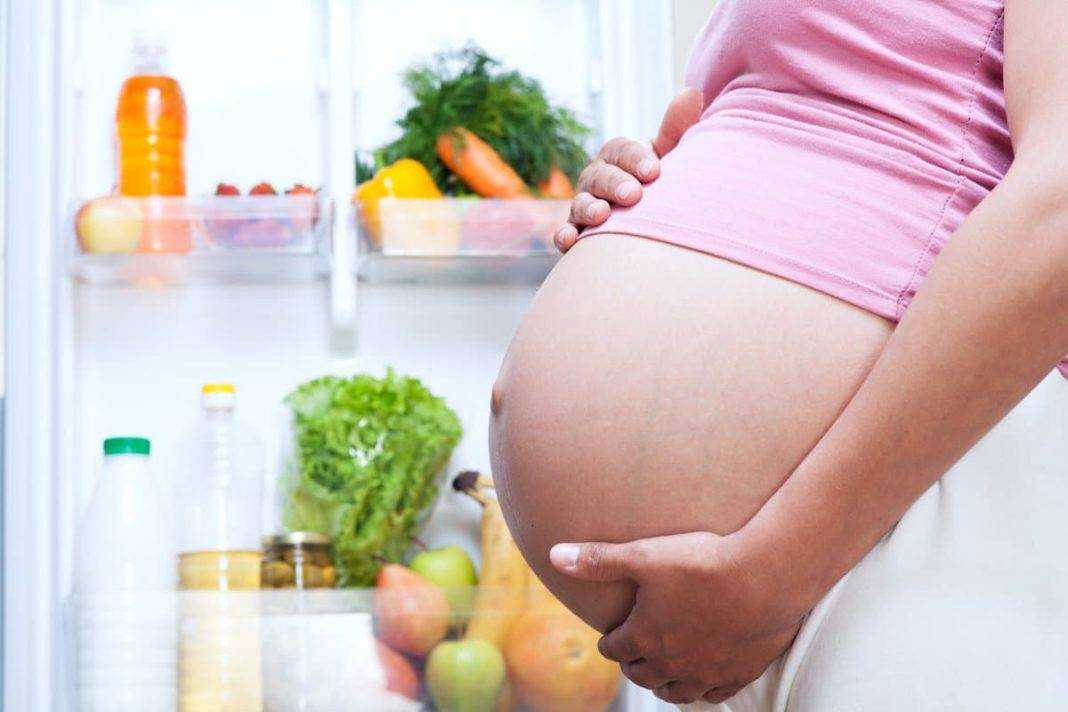 Mom puts on weight more noticeably, the body prepares for childbirth. The diet of a pregnant woman in the 3rd trimester involves a menu with a restriction of simple carbohydrates. This does not mean that the diet should be aimed at losing weight and losing weight. It's more about a balanced diet.
Mom puts on weight more noticeably, the body prepares for childbirth. The diet of a pregnant woman in the 3rd trimester involves a menu with a restriction of simple carbohydrates. This does not mean that the diet should be aimed at losing weight and losing weight. It's more about a balanced diet.
During pregnancy, strict restrictions should be avoided and, moreover, you should not starve yourself. Just like in the second trimester, watch your calcium intake. To exclude edema, fatigue and toxicosis, try to give up fatty meat.
Protein diet for pregnant women
Following the principles of this diet helps to return to its former shape almost immediately after childbirth. The protein diet for pregnant women is based on the main rule - the daily protein intake should be 120 grams. However, in addition to protein foods, a future mother can consume up to 400 grams of carbohydrates per day.
It is also important to consider what not to eat during pregnancy. Banned are chocolates, cakes, sugar, white bread and fast food. There are other basic rules:
Banned are chocolates, cakes, sugar, white bread and fast food. There are other basic rules:
- Distribute food throughout the day. The optimal number of meals is 5 times a day. Five meals a day includes three main meals and two light snacks.
- Maintain breaks between meals at 3.5 hours.
- Drink enough water per day, but in small portions during the day, not at night.
Benefits of a protein diet for pregnant women
- You eat a varied diet and don't feel hungry because protein takes a long time to digest.
- You eat enough protein, which is an important micronutrient for the body.
- You don't completely eliminate carbohydrates. The diet includes fruits, vegetables and cereals. The only thing you cut out of your life is fast-digesting carbohydrates like white bread and sweets. Simple carbohydrates just negatively affect the digestion of pregnant women and lead to constipation.
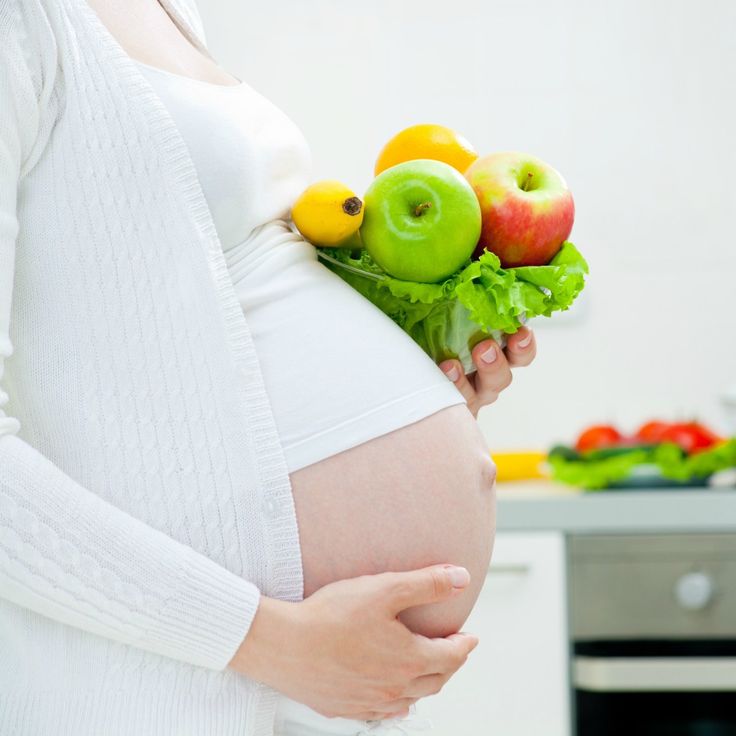 As a rule, these are empty calories with no nutritional value.
As a rule, these are empty calories with no nutritional value.
Cons of a protein diet for pregnant women for weight loss
- A protein diet may not be right for you, as it does not adjust much depending on the trimester. Before starting a diet, you should consult a doctor.
- As part of the diet for pregnant women, general recommendations are given for each day, which you adhere to, missing individual indicators.
- Some sources indicate that in the first trimester it is necessary to consume 60-90 grams of protein per day, and from the 5th month of pregnancy - increase the daily rate to 120 grams. To determine the optimal amount, contact your doctor.
It should be noted that in excess of protein can overload the body and lead to undesirable consequences. It provokes increased work of the kidneys, necessary for the removal of their decay products. Lack of fiber and an excess of proteins - let it lead to stomach problems in the form of bloating, heaviness, heartburn, and so on.
Daily protein diet menu for pregnant women - 1st trimester
- Breakfast: oatmeal and dried fruit (literally a few pieces) and rosehip broth.
- Snack: any fruit, medium-fat cottage cheese no more than 100 grams and 1 tablespoon of curdled milk.
- Lunch: chicken broth soup, steamed vegetables up to 200 grams and 1 piece of lean fish for a couple.
- Snack: natural yogurt (1 cup) and an apple.
- Dinner: Mixed vegetable omelette and a slice of whole grain bread.
Daily protein diet menu for pregnant women - 2nd trimester
- Breakfast: whole grain bread slice, hard boiled egg and green tea.
- Snack: 1 glass of fermented baked milk and a small banana.
- Lunch: broccoli soup, rice with chicken (200 grams), grated carrot salad with sour cream
- Snack: a handful of hazelnuts and 5 pieces of dried apricots.
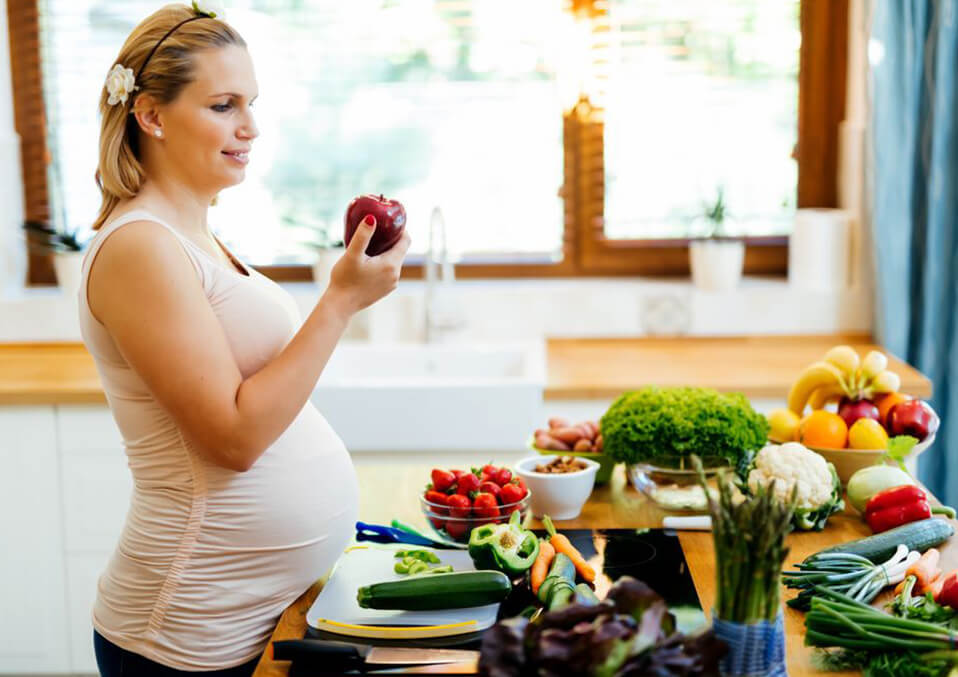
- Dinner: fresh vegetable salad and a handful of cottage cheese.
- Snack: a glass of low-fat yogurt.
Daily protein diet menu for pregnant women - 3rd trimester
- Breakfast: milk rice porridge with dried fruits, raisins and fruit drink.
- Snack: diet syrniki with oatmeal and pear.
- Lunch: fresh cabbage soup and grilled fish with vegetable stew (medium portions).
- Snack: 1 cup yogurt, a slice of whole grain bread, an apple.
- Dinner: fresh vegetable salad and steamed turkey with 50 grams of buckwheat.
- Snack: low-fat kefir 1 cup.
Diet number 9 for pregnant women
Diet (table) number 9 for pregnant women with diabetes provides for fractional meals with a break between meals of 2.5 hours. This mode will avoid spikes in blood sugar. One serving should not exceed 150 g. It is based on the recommendations of the Soviet gastroenterologist Pevzner.
When following table number 9, it is necessary to limit the amount of carbohydrates to 200-300 g per day. Two meals should be rich in protein. The total calorie content of the diet should not exceed 2500 kcal. At its core, diet number 9for pregnant women with gestational diabetes is somewhat similar to the principle of nutrition, in which protein predominates. Gestational diabetes mellitus (GDM) manifests itself during the period of bearing a child and is limited by the duration of pregnancy, that is, sugar rises only in these months.
When following the Pregnancy Diet 9, sugar and simple carbohydrates should be excluded from the diet. Limit your intake of pasta, starchy vegetables and legumes, fried foods, fatty foods, smoked foods, and salt.
Diet table number 9in case of diabetes, pregnant women are obliged to exclude sugar and simple carbohydrates: even from 100 g of pasta, the glucose level can jump up to 8 units. Now the woman's body is under tremendous stress: hormones block insulin, and the pancreas must produce more of it than in any other state.
Now the woman's body is under tremendous stress: hormones block insulin, and the pancreas must produce more of it than in any other state.
High blood sugar can affect both the mother's well-being and the baby's health. Diet table number 9 for gestational diabetes in pregnant women takes into account the preparation of a balanced menu that helps to cope with unpleasant symptoms. We recommend regular visits to the doctor during pregnancy so that he can track the dynamics of the baby's development and adjust therapeutic nutrition for diabetes.
It is not worth neglecting the doctor's recommendations, because diabetes during pregnancy can harm both the mother and the child. In rare cases, the disease can lead to miscarriage.
Diet table number 9 for GDM in pregnant women is also suitable for weight loss, because you control the amount of carbohydrates and reduce sugar in the diet. What do you need to know about the power plan? We share the basic principles of the 9th table.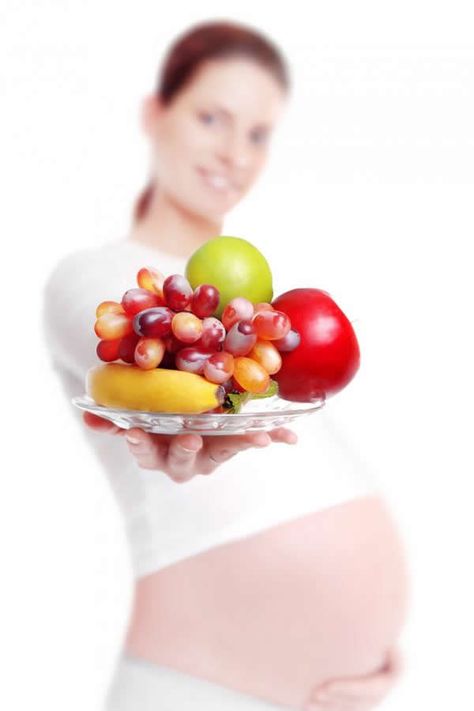
Keep a food diary
To lose weight and improve your well-being, you need to control the percentage of carbohydrates and sugar in the diet. The easiest way to do this is with a diary. Write down every meal regularly so that the doctor can adjust the menu based on the results of the tests. If the sugar level jumps sharply, the specialist will know what is the reason.
Control carbohydrates
Diet table number 9 for pregnant women is a menu for every day with a minimum amount of carbohydrate foods. If they are present, they should be evenly distributed throughout the day. This way you avoid sudden spikes in blood sugar after eating. Doctors recommend reducing portions to small and medium and do not forget about healthy snacks.
Bet on foods with a low glycemic index
A diet with high sugar in a pregnant woman necessarily includes foods that do not cause large drops in blood glucose levels. Choose healthy, low-GI carbohydrate foods such as vegetables, beans, low-fat dairy, berries, and whole grain snacks.
Choose healthy, low-GI carbohydrate foods such as vegetables, beans, low-fat dairy, berries, and whole grain snacks.
Include lean proteins such as tofu, chicken, fish and eggs, as well as healthy fats in your diet. The list includes nuts, avocados and olive oil.
Keep yourself away from foods that are low in nutrients. Sweets, sugary drinks, ice cream and fast food - these foods are prohibited for diabetics. And no compromises, because you need to think not about momentary pleasures, but about the health of both of you.
In order for the diet table No. 9 for pregnant women to be suitable for weight loss (under the supervision of a doctor), you need to follow other important rules:
- Control your daily calories. It is calculated from the individual characteristics of the body (35 kcal per 1 kilogram of mother's weight), but does not exceed 2000 calories per day. Half of the diet is healthy carbohydrate meals, 20% is protein foods, and the rest is unsaturated fats.

- Do not exceed the allowed daily allowance of salt - 12 grams.
- Drink the required amount of water, at least 2 liters.
- Eat small meals up to 6-7 times a day. Try to maintain a pause between meals at 2 hours.
- Replace sugar with sweeteners.
- Steam or simmer food. Fried foods are completely excluded. Meat and vegetables can be baked.
- Smoked and fried foods are prohibited.
- Priority is given to foods high in fiber.
If you are on a diet for pregnant women with diabetes and are overweight, be sure to keep an eye on the increase. Get on the scale every week and periodically take urine and blood tests. Of course, don't forget your home blood glucose meter. People with diabetes should definitely have a device in their first aid kit.
Diet 9 table for pregnant women - menu
Monday
- Breakfast: vegetable salad, porridge, boiled egg.

- Second breakfast: jelly.
- Lunch: liver with puree, chicken broth, juice.
- Afternoon snack: peach.
- Dinner: chicken breast, cabbage salad with carrots.
- Late supper: curdled milk.
Tuesday
- Breakfast: cottage cheese, oatmeal, vegetable juice.
- Second breakfast: kefir.
- Lunch: boiled salmon, buckwheat, lean cabbage soup.
- Snack: apple.
- Dinner: boiled egg, vinaigrette.
- Late supper: fermented baked milk.
Wednesday
- Breakfast: chicory drink, yogurt, barley porridge.
- Second breakfast: milk.
- Lunch: baked turkey, vegetarian borscht, fruit.
- Snack: orange.
- Dinner: steamed fish cake, vegetables.
- Late dinner: kefir.
Thursday
- Breakfast: millet porridge, cottage cheese, tea.

- Second breakfast: kefir.
- Lunch: boiled chicken, soup, compote.
- Snack: jelly.
- Dinner: cabbage rolls, boiled meat.
- Late supper: curdled milk.
Friday
- Breakfast: boiled egg, vegetable salad.
- Second breakfast: vegetable juice.
- Lunch: boiled veal, stewed cabbage, soup.
- Snack: pear.
- Dinner: boiled fish, vegetable casserole.
- Late dinner: yogurt.
Saturday
- Breakfast: buckwheat porridge with yogurt.
- Second breakfast: jelly.
- Lunch: stewed rabbit, baked potatoes, fish soup.
- Snack: kefir.
- Dinner: barley, boiled fish.
- Late dinner: apple.
Sunday
- Breakfast: buckwheat, boiled egg.
- Second breakfast: an apple.
